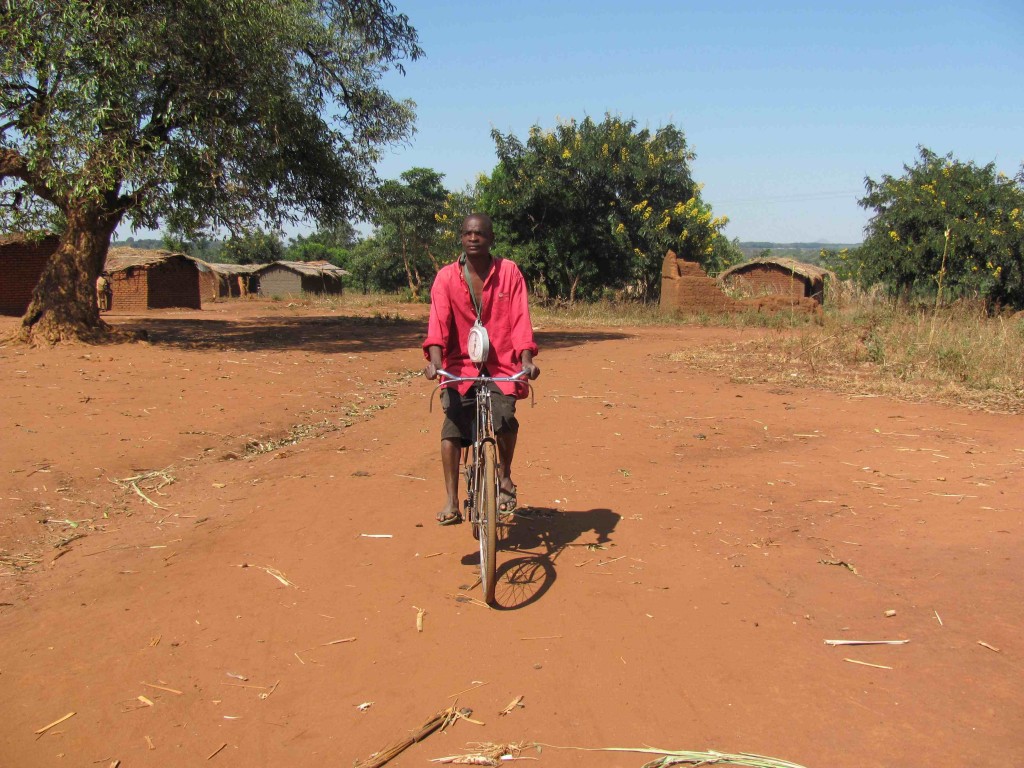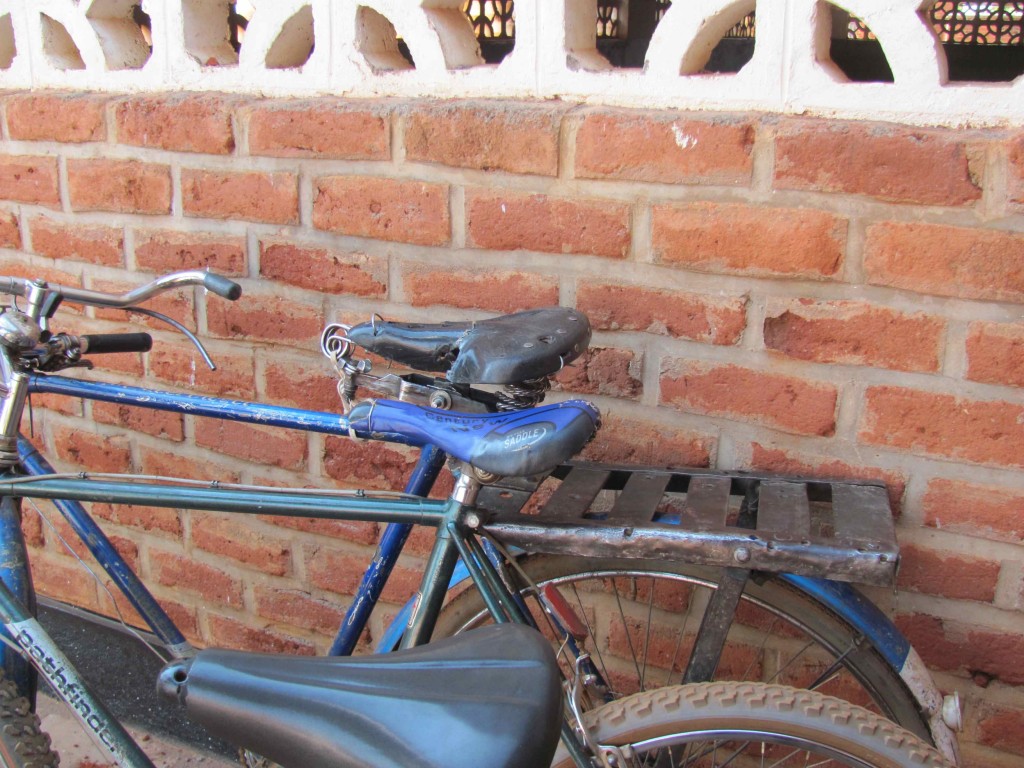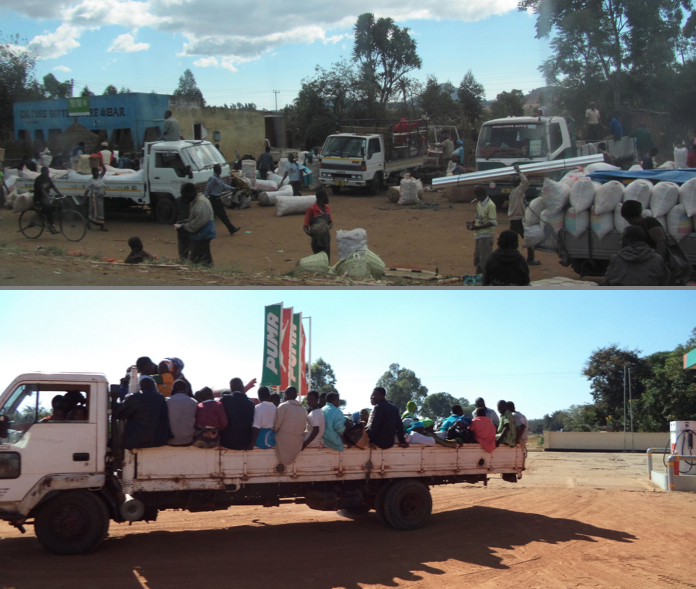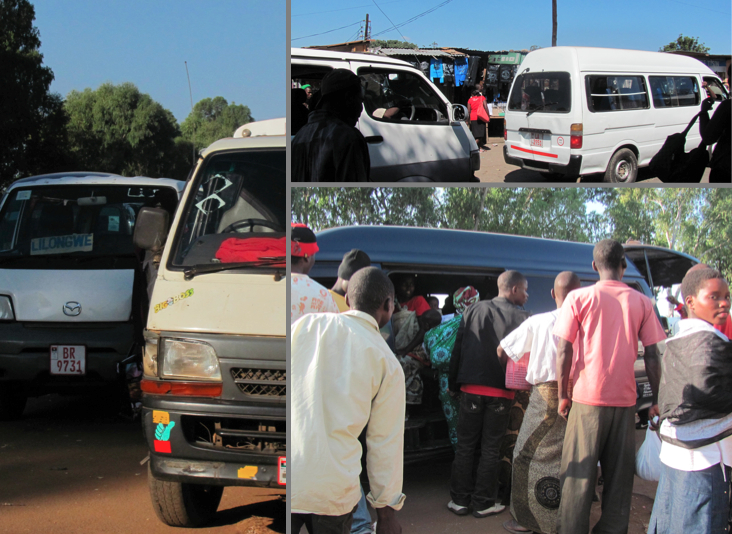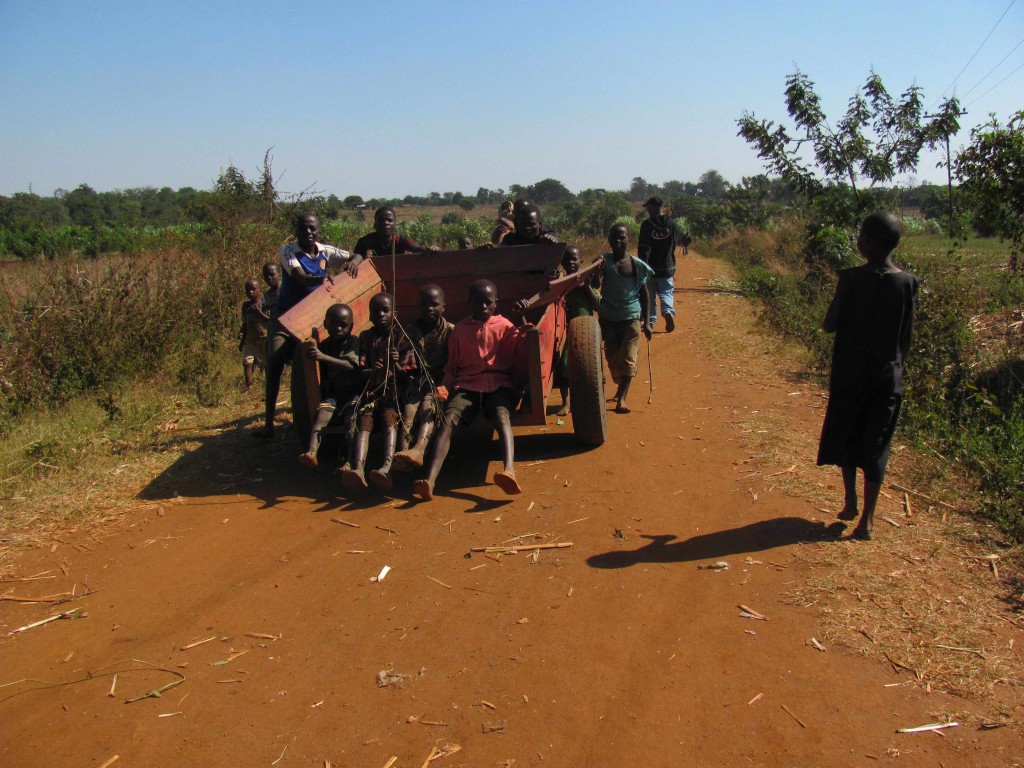Food and dignity are funny things. Repeated studies have shown that when the incomes of people living in poverty and hunger increase, they don’t actually eat more: instead, they eat ‘tastier’– spending more on fewer calories, increasing the proportion of fat and sugar in their food budgets, decreasing consumption of staples and, in some cases, actually reducing the number of calories they take in overall. [1]
I set out during lunch today with the idea of taking a ‘picture tour’ of the street food in Namitondo for this blog. As I walked down the dusty clay road into the market, my head buzzed thinking about dignity and the need to eat for pleasure, not just sustenance. Little did I know.
[Warning: for only the food tour, just scroll through the pictures.]

I walked from the main intersection by the hospital instead of the way we usually walk from Zitha house and passed a woman selling the biggest bananas I’ve ever seen in this country (the ones on the right are more typical, sweeter and less banana-y than the ones in the US). I saw a stand by a construction site with a plastic tub on the counter; doughnuts, I figured, and stopped to buy one and check a food off my to-capture list. Instead, I was surprised to see these: samusas, Irish potatoes with pepper in a pocket of fried dough. I’d never seen them before, but I really hope I see them again.

I passed a corn seller on the way back to where I thought Daniel’s friend Samson’s family shop was. I’ve tried the corn before, and sadly it’s dry and not as good as it looks: this is one we do better in the States.
I emerged from the covered row of stalls what I would call, in retrospect, “completely lost.” I ducked through an alleyway and zikomo’d past the pair of chitenje-clad knees perched at its end into a familiar but mostly empty clearing. Turned around and saw a group of women selling doughnuts and the round flat fried things Sam had told us were called “Africa cakes.” Perfect.
I walked up to them and stood while I tried to decide what to get. Before I could ask for anything, though, one of the women stood up and started gesturing and speaking in rapid-fire Chichewa. I stuttered and my face contorted with discomfort and confusion; luckily this is a pretty everyday occurrence and by now I’ve learned some of the words: “…Ndikuphunzila Chichewa… pangono pangono.” I’m learning Chichewa… slowly, slowly.
She kept speaking, but she slowed down some. Didn’t really help. “PANGONO pangono.” She stopped and smiled. I looked at my watch and realized that I wasn’t just going to buy something from these women and leave. “Muli bwanji?” she asked. “How are you?” Chichewa 101, I had this one down: “Ndili bwino, kaya inu?” Got the accent sort of right, and everything. She smiled at me again, and I tried to give them a sense of my skill level by greeting the woman to her right with the afternoon greeting.

I asked how much the food on the far right cost while a woman on the next stoop over asked loudly about the azungu. 10 kwacha. I began to sit down on the dust on the far right, but the woman closest to me stopped me and arranged some pieces of wood. I sat cross-legged in my blue jeans, smiled at the women, looked around for a bit, and then remembered that I was supposed to be trying the food and pulled a K10 coin out of my pocket.
I still have no idea what it was that I ate. Bottom left picture. Looks like a beignet but I was surprised to find that was salt on top of it. Crispy, smoky, slight fishy flavor. She pointed: “chinangwa.”
For the next few minutes we exchanged halting small talk and they pointed out the names of the other foods they were selling. They still occasionally raced ahead of my Chichewa abilities, but I pulled out my early-00’s style Nokia cell phone and saved a message to myself with all the words. From left to right above: chinangwa, batatas (soft, sweet, smoke-infused Irish potatoes cooked like the corn), tumbuwa (“Africa cakes”, a rough fried corn meal round), and mandaz (oval doughnuts that taste like the oil they use here; we were told it’s a cheap vegetable oil that would usually be used for mechanical purposes but it tastes good to me.)

Then the kids came, 20 or so in primary school uniforms crowding around our stoop to look at me. I’ve gotten accustomed to it from walking around the village or to and from the hospital, but to be honest it still makes me incredibly uncomfortable to be the focus of so many kids shouting “azungu” and thinking of my presence as a spectacle. The women tried to teach me how to shoo them but I stumbled over the words. The pained look came back to my face. The kids giggled amongst themselves, “azungu”.
I looked up at Catherine next to me and figured it was worth a try. “Zinalanga Hannah… No azungu” My name is Hannah, not azungu. I repeated it like a plea.
She and the other women took my cause. I know it sounds cheesy, but I almost wanted to cry when they loudly repeated that to the gathered kids and admonished them for treating me like a spectacle. I couldn’t understand most of it, but I looked up when I realized that I thought they said a word I recognized: “zanga,” friend.
I thanked them as profusely as I could in broken Chichewa (there are three common ways to thank someone in Chichewa, we elicited a lot of giggles figuring them out in the first few weeks here). Catherine smiled and answered her phone; I heard her say something about “zanga Hannah,” and for once I’m certain she said “zanga” and not “azungu.”
The kids didn’t go away, though the older ones left and later kids in torn clothes came carrying younger siblings to come see. Instead, a crowd of primary school kids and one of their teachers helped me talk to Catherine and her friends. I ate a batata, they eagerly watched me write down Chichewa words that I’ll probably never need to use, for “up” and “down” and “arm” and “shoes.” A few brave older kids jumped out and tried their English on me. We were back to the feeling of hanging out, albeit with a few more people. Catherine moved over so I could sit on the stoop, and some of the kids bought snacks. At some point the kids taught me the word for “camera” and I let them commandeer mine until the game ended, as all games of 20-kids-play-with-one-toy must, with it dropping into the dust.
We sat for a while longer, until I looked at my watch and the woman who’d originally stood up and gesticulated at me asked if I had to go. I said goodbye and “zikomo cuambiri, cuambiri, cuambiri,” for which a kid named Useful jokingly mimicked me as they followed me out of the square to get one of the fanta and coke freeze-pops people eat by the side of the road.

This isn’t a picture-perfect story. Once we were further down the road, some of the school kids resumed following me with the typical “azungu, you give me money.” I still walked out of there not knowing all of their names and not remembering all of the Chichewa they’d tried to teach me, and I’m still leaving here in less than three weeks to return to a country most Malawians seem to think of as some untold paradise.
But what made me feel so welcome was that they knew that: they asked me when I was leaving and where I was from, they accepted that mediocre may be about as good as my Chichewa will ever get. For an hour or two, these women pulled me down from my ivory tower thinking about dignity. I always worry that it might seem disrespectful to be spending so little time here and still think that we can do something sustainable, but with that hour and shared food I felt more relaxed and at ease than I have in weeks. We all could acknowledge our shortcomings and keep trying anyway. In the face of the overwhelming, it seemed like the most vital thing in the world to be able to sit on a stoop eating unhealthy street food and laughing at yourself.
All right, enough with the talking, back to the food:

No interest in trying the street meat, but these stalls always provide an interesting look at the internal bone structure of common farm animals.

The famous street chips. They’re K100, but for an extra K50 they will put in cabbage and tomatoes. These were a little salty for my taste, but Dr. RRK and Dr. Oden both said they love them and we’ll probably give it another try before we leave.

One day close to the beginning of our time here, we were curious enough about the sticks kids were chewing by the street to buy one of these 8-foot poles of sugarcane (zimbe) for K80. They’re really hard to eat and extremely sweet, but it was definitely worth the adventure of trying them. I think this was one of the first times we went into Namitondo.

This last picture is totally cheating because it’s not even remotely street food, but we’re always amused to see that the sweet rolls at bakeries all over the country are named “Obama rolls.” MK told us that they used to be called “Osama rolls,” and that they changed the name in summer 2011. The baker is Aaron, who started a conversation with us one Saturday while we were drinking Fanta on the general store porch, heard that we were from the US, and immediately asked if we knew (former BTB intern) Elizabeth Nesbit.
[1] I pulled these sources from the book Poor Economics by MIT professors Abhijit V. Banerjee and Esther Duflo: Shankar Subramanian and Angus Deaton, “The Demand for Food and Calories,” Journal of Political Economy 104 (1) (1996): 133-162; Robert Jensen and Nolan Miller, “Giffen Behavior and Subsistence Consumption,” American Economic Review 98 (4) (2008): 1553-1577; Angus Deaton and Jean Dreze, “Food and Nutrition in India: Facts and Interpretations,” Economics and Political Weekly 44 (7) (2009): 42-65. They also cite a passage from George Orwell’s The Road to Wigan Pier that was really helpful and is on the reading list for when I get home.









































